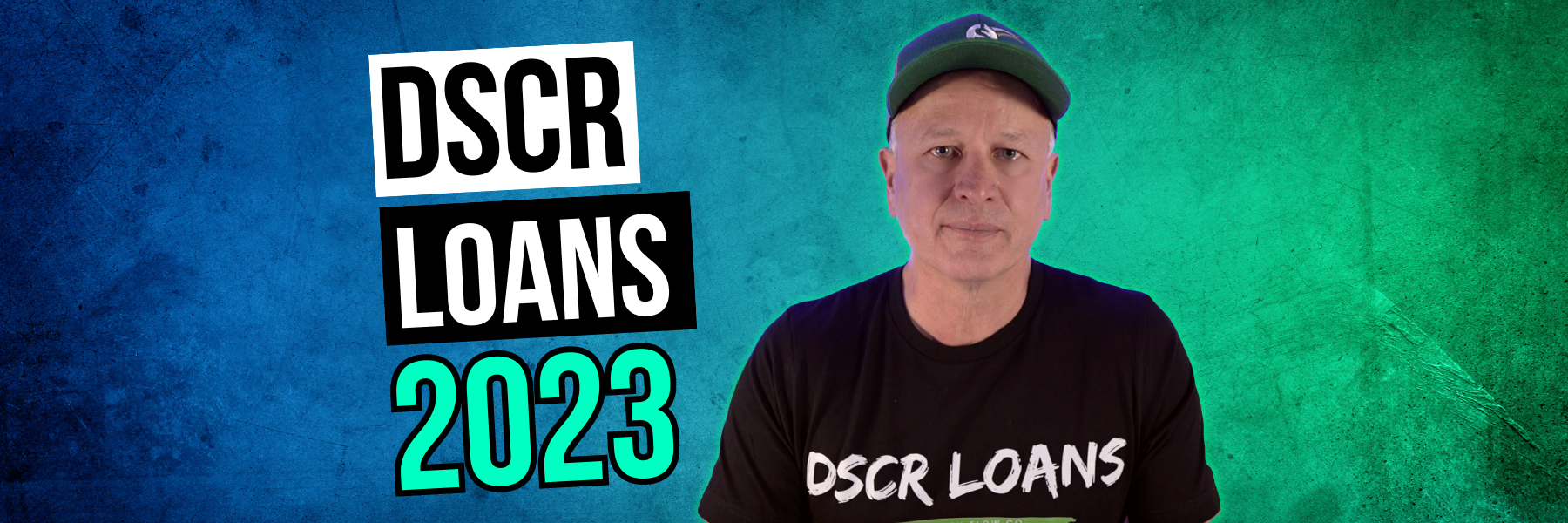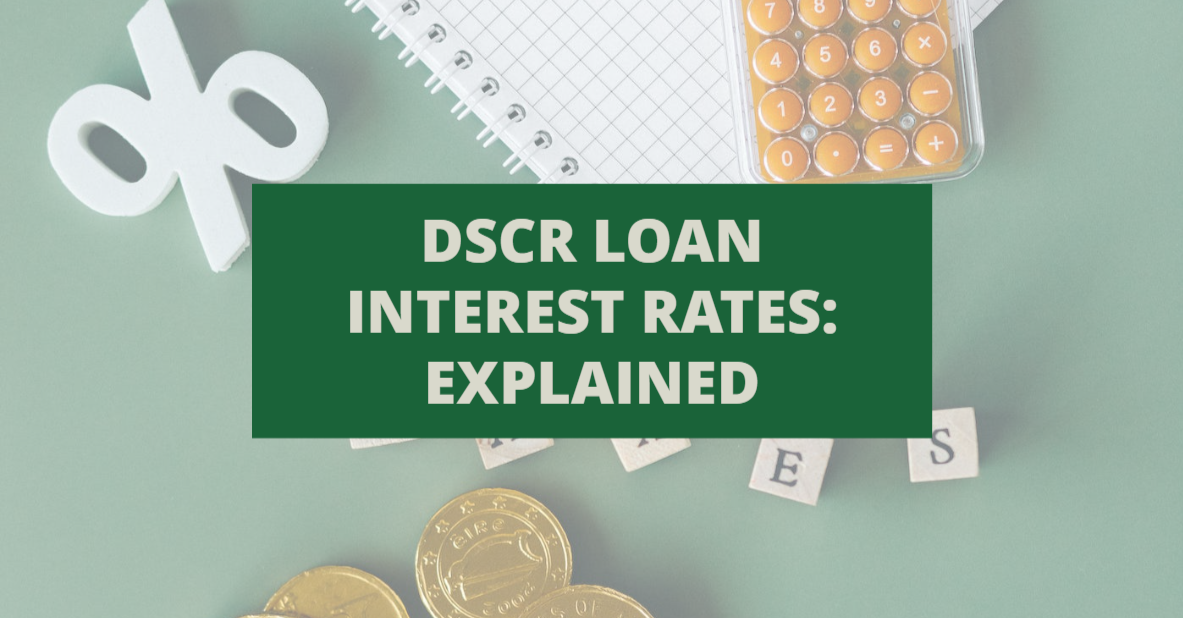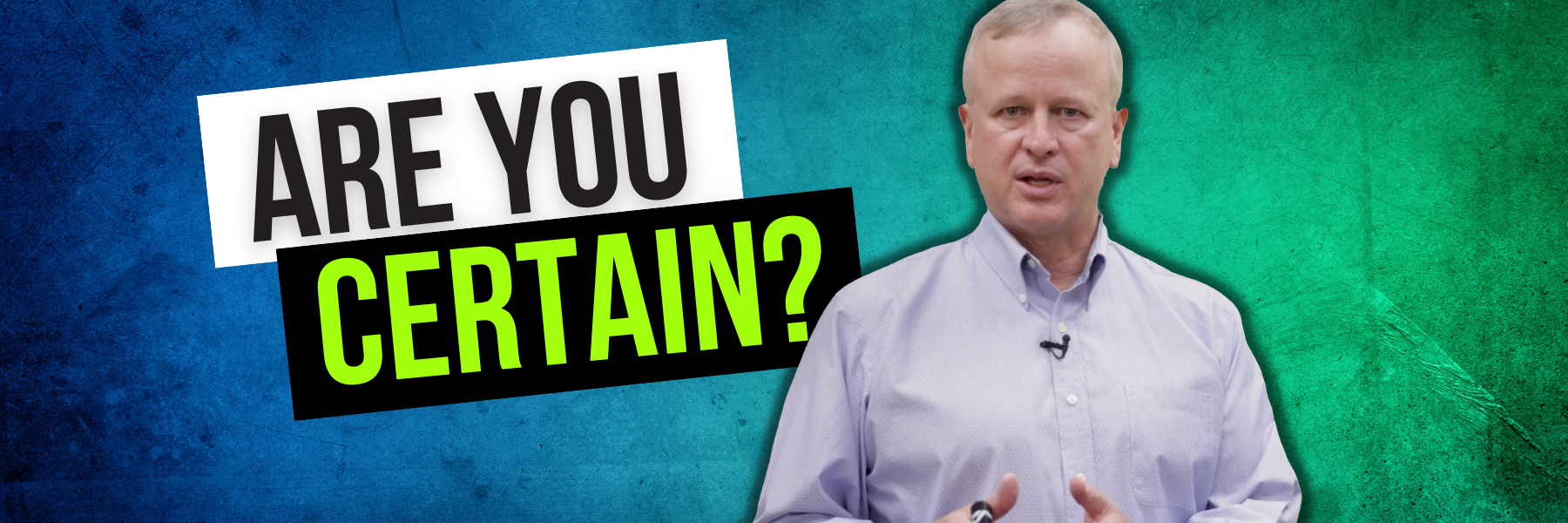Do you sell at a loss, or wait out the market? Which is right?? Sometimes it’s best to go for certainty in real estate investing.
A real estate horror story:
You buy a big, pricey house in early 2022 for a quick flip. Seven months of carry costs later… It still hasn’t sold, with never-ending price drops, and no profit in sight.
We’ve had a lot of clients in this spot. They have flips on the market that just aren’t selling. They come to us overwhelmed, feeling crazy for paying a constant stream of outflow every month.
The property becomes a giant anchor they’re dragging behind them. They just want to figure out – How do you make it stop??
We have a plan we work through with people in this situation. We call it: “Certainty.”
Let’s walk through an example of how we’ve helped a client create certainty in their real estate investment.
What Is Certainty in Real Estate Investing?
Certainty in real estate investing is about coming up with a conclusion. This conclusion is whatever path:
- Gets the property somehow moving along.
- Offers the least out-of-pocket cost for the client.
- Provides a clean slate to get them back on track to take advantage of the upcoming better market.
Certainty in Real Estate Investing by Taking a Short
In a market like this, you often end up with two options:
- Continue paying carry costs, with no sale in sight.
- Sell at a loss, for certainty about how much you’ll lose and the freedom to move on.
Taking the first option involves high monthly payments for 6-9 months, or longer. Once the end is finally in sight, it’s possible you’ll find out you’ll have to pay even more and take a huge loss anyway.
With the second option, you accept what the market is giving you. You take the short, then you move on. Money will still be lost, but the timeline of the payouts has a clear end. It becomes certain.
The first option is a gamble with the cards stacked against you. The second option is a clean slate to start fresh.
If you’re trying to find the best route to certainty for your property, we’ll go over some examples. You can follow along with the numbers for your own situation. Running these numbers will help you find out if it’s smart to opt for certainty in your real estate investment.
How to Calculate the Certainty of a Real Estate Investment
One client owed (and were paying interest on) $600,000 for their loan. When they first took out this loan in early 2022, they were expecting to sell the property within a month or two for $800,000+.
This property was supposed to be a quick cleanup – get in, get out, and make a quick couple hundred thousand dollars. Then the market changed, especially for higher price point homes in their area.
Now, five months later, they’re desperate to get out of the property.
What Is the Cost of Certainty?
If sold now in the current market, they could get $570,000.
That’s $230k less than they had originally hoped to get for this property – enough of a gut-punch as-is. But to sell for $30,000 less than you owe on the loan itself? Not ideal.
Although selling right now would mean a $30,000 loss for this client… At least that number is certain.
They’ve already spent close to that much on carry costs alone since purchasing the property. If they can’t get a better price for another several months… Which option is more worth it?
Would you rather lose $30k for sure? Or pay dollar signs with question marks and no end in sight?
How Do You Pay for the Loss?
So, say you’re in this client’s position, and you’ve decided to sell for $570k. How do you go about paying off the remaining $30,000?
In this specific instance, we as a lender worked flexibly with our client. Since they were already locked into making payments indefinitely, we trusted them to also pay in a definite amount of time. So we put a term on the remaining $30k for the same payment amount.
Now, the client has the property out of their hands and a much smaller loan to pay off. They will make the same payments as they were on the larger loan, and they could pay the full loan off in 5 months and be done with it.
$30,000 isn’t a little money. Five months isn’t a short amount of time. But paying that much for certainty can beat paying 2x or 3x as much for uncertainty in this market.
What If Your Lender Isn’t Flexible?
Most lenders will be open to working something out with you. They want certainty, too. It does them good in the long-term for you to get this property out from over your head.
Opting for a shorter term loan is a great way for a lender to clear the decks and get ready for the next wave of great purchases.
However, even if your lender is unwilling to work out a shorter term, you still have a couple options for paying off the loan when you sell at a loss:
- Cash – The obvious answer is you pull this cash right out of your own bank account. Not everyone has that luxury (or wants to take that path if they do), so there are a few other options.
- Private money – In a bind like this, the flexibility of OPM is useful. If you borrow money from family, friends, or people in REI groups in your area, you can pay them back at a rate better than they’d get in the stock market or a bank right now.
- Gap funding – You could also do a lien on another property to provide some gap funding. If your original lender won’t do this, we can help.
- Use another lender – If the property’s original lender won’t agree to a short-term loan, someone else might.
How to Calculate the Uncertainty of Real Estate Investing
If you’re deciding whether to sell at a loss or keep fighting in a declining market, the question comes down to whether you want a certain loss or an uncertain loss.
Let’s dig through the numbers to see how much a client of ours was paying every month to keep a property on the market with no in-flow.
How Much Are Carry Costs?
Our client with a $600,000 loan could only sell at $570,000 in the current market.
This is a $30,000 loss. But the number is certain.
Remember their alternative is covering the costs while holding the property for an indefinite period of time. In a market that’s not seeing higher property values for potentially a long time.
The list of costs adding up month after month gets long fast:
- Mortgage
- Interest
- Insurance
- Taxes
- Staging
- Utilities
- An extension fee if you go too long with your short-term loan
- And more.
On a $600,000 house, these costs add up rapidly. The market could take 2+ years to get to a point where they can sell for more than $600,000… This client would be losing much more than $30,000. And still, even that is not a promise.
What Does Uncertainty in Real Estate Investing Cost?
Here’s the breakdown for this client’s property’s costs:
- Mortgage (in this case, interest-only payments): $4,900
- Taxes: $300
- Insurance: $200 (Paid up-front for the period of time they thought they’d sell by. That period has passed, so this became a monthly charge.)
- Staging & Utilities: $325 (Since it was a larger, higher-quality house, they added some furniture and decor to help it sell. Utilities also stayed on while the house was on the market.)
That’s a grand total of $5,725 per month to keep this house on the market.
This is money that adds no true value to the property. It’s cash flying out of their pockets and getting them nowhere fast.
These costs are a necessary evil in normal real estate investing. The kicker here is that there’s truly no end in sight.
The market is not expected to get better (especially for higher-end properties) for quite some time. In fact, interest rates are actually anticipated to go up.
Interest rates rising just one more point could impact buying power so much that the house’s market value could go down another $50,000.
Uncertainty vs Certainty in Real Estate Investing
Uncertainty: You know you’ll pay $5,725/month. But you have no clue how long.
Certainty: You know you’ll owe $30,000 on the short. But you also know the payments will be done in 5 months.
–
Uncertainty: You know money will be leaving your investment business, but you don’t know for how long.
Certainty: You know you’ll go into the next market without this property and its almost-$6,000 monthly payment hanging over your head.
–
Uncertainty: You don’t know what the selling price will be next year. It could be $520k or lower.
Certainty: You know the house could sell for $570k now.
–
Uncertainty: You don’t know where the market is going. But it’s probably going to be rough for sellers.
Certainty: You know that wherever the market goes from here, better deals are likely to become available for buyers.
Do You Want Certainty or Uncertainty?
Our client took a property that was uncertain, and they found a path with a doable, certain number.
Despite the financial loss, the certain option allowed them more freedom. They knew when the payments would end, and they could plan for the future.
Property values are anticipated to keep going down. Terrible if you have a bunch of properties sitting on the market eating up your cash flow… but great for buying.
If you have any questions, or want to run through some numbers, we’d love to help. Even if we’re not your lender, we can give you guidance or gap funding.
Send us an email at Info@TheCashFlowCompany.com. For more info on real estate investing in this market, check out our YouTube channel.



